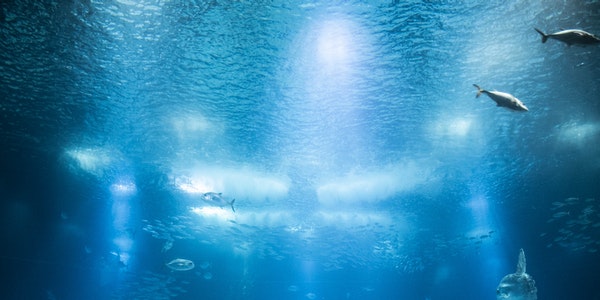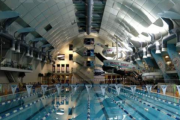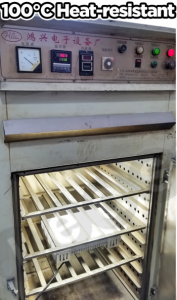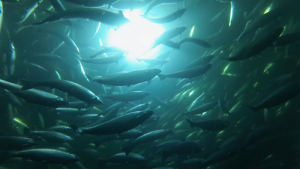 With the advancement of science and technology, the depth of detection of the ocean is getting larger and larger, and deep-sea operations are often affected due to insufficient solar light, or even because visibility is too low to perform. However, the general underwater lighting incandescent lamp can only withstand about 10 meters of water pressure, and because the structure of the incandescent lamp is not conducive to heat dissipation and waterproof, short life, and safety performance problems. With the development and application of nitride-based high-brightness LEDs, and because new-generation semiconductor lighting sources-nitride high-power white LEDs have the advantages of small size, low power consumption, long life, environmental protection, high efficiency, etc., it has been Become the focus of attention. The realization of the invention can not only replace the lighting incandescent lamps in shallow waters in the past, but also can be applied to deeper waters. SUMMARY OF THE INVENTION The object of the present invention is to provide a kind of LED deep-sea lighting lamp, which can withstand 6,000 meters of hydrostatic pressure, and has the characteristics of low cost, long working life, good white light uniformity and brightness, and the like.
With the advancement of science and technology, the depth of detection of the ocean is getting larger and larger, and deep-sea operations are often affected due to insufficient solar light, or even because visibility is too low to perform. However, the general underwater lighting incandescent lamp can only withstand about 10 meters of water pressure, and because the structure of the incandescent lamp is not conducive to heat dissipation and waterproof, short life, and safety performance problems. With the development and application of nitride-based high-brightness LEDs, and because new-generation semiconductor lighting sources-nitride high-power white LEDs have the advantages of small size, low power consumption, long life, environmental protection, high efficiency, etc., it has been Become the focus of attention. The realization of the invention can not only replace the lighting incandescent lamps in shallow waters in the past, but also can be applied to deeper waters. SUMMARY OF THE INVENTION The object of the present invention is to provide a kind of LED deep-sea lighting lamp, which can withstand 6,000 meters of hydrostatic pressure, and has the characteristics of low cost, long working life, good white light uniformity and brightness, and the like.
Marine floodlight concept
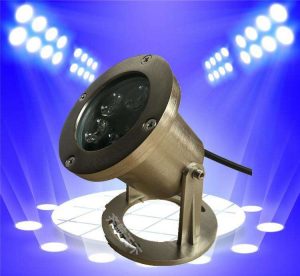 Marine Floodlight is a point light source that can illuminate evenly in all directions. Marine floodlights are used for underwater viewing, decoration, job lighting, or underwater lighting. Can be divided into two types of anti-immersion and anti-diving. The former is used for shallow water working areas such as fountains and swimming pools; the latter is used for working areas where water depth is required. Their structure and materials should meet the requirements of water pressure resistance, mechanical shock resistance, corrosion resistance and electrical performance according to the conditions of use. Its irradiation range can be adjusted arbitrarily, and it appears as a regular octahedron icon in the scene. Marine flood light is the most widely used light source in undersea operations. Standard flood lights are used to illuminate the entire scene. Multiple flood lights can be applied to a scene. To produce better results. It can also be regarded as one of the light sources with good marine lighting effects for use as a high-brightness diffuse light source.
Marine Floodlight is a point light source that can illuminate evenly in all directions. Marine floodlights are used for underwater viewing, decoration, job lighting, or underwater lighting. Can be divided into two types of anti-immersion and anti-diving. The former is used for shallow water working areas such as fountains and swimming pools; the latter is used for working areas where water depth is required. Their structure and materials should meet the requirements of water pressure resistance, mechanical shock resistance, corrosion resistance and electrical performance according to the conditions of use. Its irradiation range can be adjusted arbitrarily, and it appears as a regular octahedron icon in the scene. Marine flood light is the most widely used light source in undersea operations. Standard flood lights are used to illuminate the entire scene. Multiple flood lights can be applied to a scene. To produce better results. It can also be regarded as one of the light sources with good marine lighting effects for use as a high-brightness diffuse light source.
What is the importance of marine floodlights
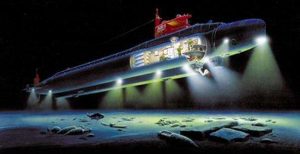 Marine lighting is mainly used in the offshore oil and gas exploration or production. Marine workers must work, study and rest in a limited space continuously for a long time, and the weather environment is harsh and the working environment is more complicated. Therefore, the lighting design of marine operations is more special and higher Claim. These requirements are closely related to the safety of marine operations and the comfortable and efficient operation of workers on the platform.
Marine lighting is mainly used in the offshore oil and gas exploration or production. Marine workers must work, study and rest in a limited space continuously for a long time, and the weather environment is harsh and the working environment is more complicated. Therefore, the lighting design of marine operations is more special and higher Claim. These requirements are closely related to the safety of marine operations and the comfortable and efficient operation of workers on the platform.
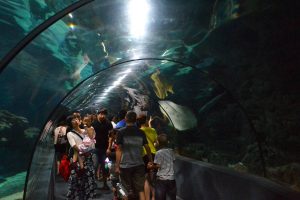 Human life has infiltrated into all areas of the ocean, and underwater military, scientific research, production, and entertainment abound. With so many underwater activities, underwater safety monitoring has become a hot topic of concern. Water has a strong absorption effect on light. The space tens of meters underwater is almost completely dark. Because human life has penetrated into various areas of the ocean, underwater military, scientific research, production, and entertainment abound. With so many underwater activities, underwater safety monitoring has become a hot topic of concern. Water has a strong absorption effect on light, and the space tens of meters underwater is almost black-film. Therefore, artificial lighting is generally required for underwater safety monitoring. Underwater lighting is different in different environments. Designing a suitable light source is very important for underwater imaging monitoring. The monitoring environment and imaging characteristics are researched, and an adaptive lighting system adapted for underwater imaging detection is developed. The lighting system can adjust the brightness of the lighting source by itself according to the change of the light intensity of the surrounding environment, so as to achieve the purpose of adaptive adjustment of the light source.
Human life has infiltrated into all areas of the ocean, and underwater military, scientific research, production, and entertainment abound. With so many underwater activities, underwater safety monitoring has become a hot topic of concern. Water has a strong absorption effect on light. The space tens of meters underwater is almost completely dark. Because human life has penetrated into various areas of the ocean, underwater military, scientific research, production, and entertainment abound. With so many underwater activities, underwater safety monitoring has become a hot topic of concern. Water has a strong absorption effect on light, and the space tens of meters underwater is almost black-film. Therefore, artificial lighting is generally required for underwater safety monitoring. Underwater lighting is different in different environments. Designing a suitable light source is very important for underwater imaging monitoring. The monitoring environment and imaging characteristics are researched, and an adaptive lighting system adapted for underwater imaging detection is developed. The lighting system can adjust the brightness of the lighting source by itself according to the change of the light intensity of the surrounding environment, so as to achieve the purpose of adaptive adjustment of the light source.
What are the requirements for lumens and illuminance in marine lighting construction?
Marine Lighting Standard
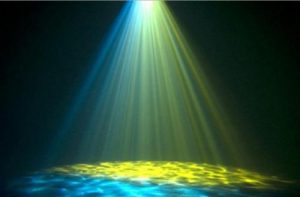 For lighting system design, the purpose is to provide satisfactory visual effects and obtain high-quality lighting. The so-called lighting quality must be considered from two aspects of illuminance and suitability, that is, not only to meet the good visibility of the illuminated object, but also to include lighting with the best color rendering index and the lowest glare index. Appropriate illumination is the first requirement for creating comfortable, efficient and safe working visual conditions. China’s current implementation of the latest standard is <Offshore Platform Illumination Requirements and Measurement Methods> compiled in 1997. This standard is higher than the ship’s illuminance standard cited in general lighting design.It is basically formulated by referring to the current Japanese JISC 1609-illuminance table. The American Petroleum Institute (API) also has recommended values for contrast in its standards, which are slightly different.
For lighting system design, the purpose is to provide satisfactory visual effects and obtain high-quality lighting. The so-called lighting quality must be considered from two aspects of illuminance and suitability, that is, not only to meet the good visibility of the illuminated object, but also to include lighting with the best color rendering index and the lowest glare index. Appropriate illumination is the first requirement for creating comfortable, efficient and safe working visual conditions. China’s current implementation of the latest standard is <Offshore Platform Illumination Requirements and Measurement Methods> compiled in 1997. This standard is higher than the ship’s illuminance standard cited in general lighting design.It is basically formulated by referring to the current Japanese JISC 1609-illuminance table. The American Petroleum Institute (API) also has recommended values for contrast in its standards, which are slightly different.
Classification of marine lighting systems
Normal lighting system
 Powered by a normal power system, it is used for normal platform operation and maintenance. Under the normal power supply state of the power station, the lighting of the offshore platform during navigation (or towing), berthing and operation has a comprehensive requirement for the visual environment of the staff. It not only needs to consider having enough suitable illuminance, but also considers other requirements for lighting quality, such as the spectral distribution of lighting sources, glare control and color visual effects. This organic combination of lighting function and suitability will produce comfort and high-efficiency work mood, which is the focus of platform lighting design.
Powered by a normal power system, it is used for normal platform operation and maintenance. Under the normal power supply state of the power station, the lighting of the offshore platform during navigation (or towing), berthing and operation has a comprehensive requirement for the visual environment of the staff. It not only needs to consider having enough suitable illuminance, but also considers other requirements for lighting quality, such as the spectral distribution of lighting sources, glare control and color visual effects. This organic combination of lighting function and suitability will produce comfort and high-efficiency work mood, which is the focus of platform lighting design.
Backup lighting system
When normal lighting fails, lighting powered by a backup generator or battery. This lighting system considers the distribution of lighting points and the level of illuminance from the principles of the necessary working space lighting, the visual requirements of the nature of work, and the capacity of the standby generator or battery.
Emergency lighting system
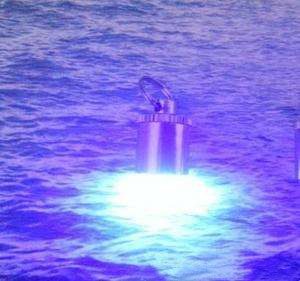 It is the illumination that provides visible vision to the outline of the object when the power fails. The emergency system can be used to provide light sources for evacuating people and cutting off the controller.For example, when a large amount of oil and natural gas escapes from the wellhead, the main generating set and the emergency generating set are both artificially cut off, the platform personnel are in the emergency step, and some special emergency operations are performed. Some necessary lighting for the equipment. For example, this type of lighting should be provided in key parts such as the blowout preventer, the control console of the throttle manifold, the drilling platform, the wellhead area, the central control room, the passageway, and the boarding place of the lifeboat. Although such lighting is from the perspective of platform equipment and personal safety, It is very important and indispensable for lighting, but there is no clear requirement for the quality of its lighting. The specifications and standards of domestic and foreign classification societies only put forward the requirements for the distribution points of this type of lighting. In this case, Next, it is only required to provide the illumination of the outline of the object so that the staff can see it. You can touch the main channel and the key controller. The emergency lighting system can be separate from or part of the normal lighting system, but most are designed as self-contained, battery-powered, self-contained, independent systems.
It is the illumination that provides visible vision to the outline of the object when the power fails. The emergency system can be used to provide light sources for evacuating people and cutting off the controller.For example, when a large amount of oil and natural gas escapes from the wellhead, the main generating set and the emergency generating set are both artificially cut off, the platform personnel are in the emergency step, and some special emergency operations are performed. Some necessary lighting for the equipment. For example, this type of lighting should be provided in key parts such as the blowout preventer, the control console of the throttle manifold, the drilling platform, the wellhead area, the central control room, the passageway, and the boarding place of the lifeboat. Although such lighting is from the perspective of platform equipment and personal safety, It is very important and indispensable for lighting, but there is no clear requirement for the quality of its lighting. The specifications and standards of domestic and foreign classification societies only put forward the requirements for the distribution points of this type of lighting. In this case, Next, it is only required to provide the illumination of the outline of the object so that the staff can see it. You can touch the main channel and the key controller. The emergency lighting system can be separate from or part of the normal lighting system, but most are designed as self-contained, battery-powered, self-contained, independent systems.
Why Choose LED Flood Light for Ocean Lighting
Marine light system
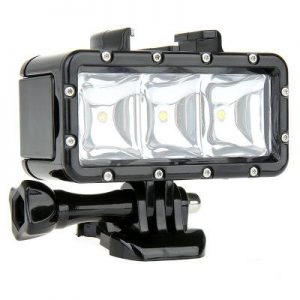 As the “core” of the deep-sea lighting system, the light source system plays a key role in the deep-sea lighting system. How to determine the optical parameters of the light source for the absorption and scattering characteristics of seawater in the deep-sea environment is the focus of deep-sea lighting system research. The performance of various light sources was analyzed, and a high-pressure mercury lamp was selected as the light source. The working depth of the deep sea lighting lamp is 1000m. Taking into account the advantages of long life, low energy consumption and fast startup of LED flood lights, LED flood lights were used for the first time as the light source of deep sea lighting, which improved the efficiency and quality of deep sea lighting. LED flood light underwater light is a kind of lamp installed under the water. It simply refers to the lamp installed under the water. The appearance is small and exquisite, beautiful and elegant. The appearance is similar to some buried lights, but there is an additional installation chassis. The chassis is fixed with screws. Because LED flood lights are used under the water and need to withstand a certain pressure, they are generally made of stainless steel, 8-10MM tempered glass, high-quality waterproof joints, silicone rubber seals, curved multi-angle refractive strengthened glass, Waterproof, dustproof, leakage-proof and corrosion-resistant.
As the “core” of the deep-sea lighting system, the light source system plays a key role in the deep-sea lighting system. How to determine the optical parameters of the light source for the absorption and scattering characteristics of seawater in the deep-sea environment is the focus of deep-sea lighting system research. The performance of various light sources was analyzed, and a high-pressure mercury lamp was selected as the light source. The working depth of the deep sea lighting lamp is 1000m. Taking into account the advantages of long life, low energy consumption and fast startup of LED flood lights, LED flood lights were used for the first time as the light source of deep sea lighting, which improved the efficiency and quality of deep sea lighting. LED flood light underwater light is a kind of lamp installed under the water. It simply refers to the lamp installed under the water. The appearance is small and exquisite, beautiful and elegant. The appearance is similar to some buried lights, but there is an additional installation chassis. The chassis is fixed with screws. Because LED flood lights are used under the water and need to withstand a certain pressure, they are generally made of stainless steel, 8-10MM tempered glass, high-quality waterproof joints, silicone rubber seals, curved multi-angle refractive strengthened glass, Waterproof, dustproof, leakage-proof and corrosion-resistant.
1.LED flood light underwater light is a kind of underwater lighting fixture with LED, light source, red, green and blue mixed color changes. It is the perfect choice for fountain, marine park, exhibition, commercial and artistic lighting. In order to better dissipate the heat of the LED flood light underwater lamp, it is recommended to use the lamp below the water surface.
2.The waterproof effect of the LED flood light underwater lamp reaches IP65, because it has good waterproof effect, the lamp can be placed below 500 meters from the water surface.
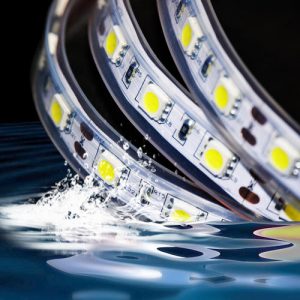 The best projection angle is 25. The controller control achieves the synchronization effect and can be connected to the DMX console. Each unit has its own address. The red, green and blue light are respectively composed of the corresponding 3 DMX channels. There are two control modes: external control and internal control. Internal control can be built in multiple change modes (up to six types) without external controllers. External control requires external control controllers to achieve color changes. Currently on the market Also most control outside.
The best projection angle is 25. The controller control achieves the synchronization effect and can be connected to the DMX console. Each unit has its own address. The red, green and blue light are respectively composed of the corresponding 3 DMX channels. There are two control modes: external control and internal control. Internal control can be built in multiple change modes (up to six types) without external controllers. External control requires external control controllers to achieve color changes. Currently on the market Also most control outside.
3.Marine flood light is the best super bright LED flood light as the light source. The light bulb can emit 100,000 hours. Each underwater light consists of 360 light sources (120 red, 120 blue, 120 green). Good light source materials make lamps longer life and obtain the most satisfactory underwater lighting effect.
4.The marine flood light uses a five-core cable to connect to the control system. The entire system includes a DMX controller, a power distribution box, and lamps and distribution that can be placed in the water. The entire luminaire is perfectly combined.
5.The marine flood light has a movable fixing clip, which can adjust the angle and position of the light. The entire luminaire is perfectly designed to effectively prevent the erosion of bromine and chlorine. Underwater lamps are generally LED light sources. LEDs are known as fourth-generation lighting sources or green light sources. They have the characteristics of energy saving, environmental protection, long life and small size. When it is powered on, it can emit a variety of colors, gorgeous and colorful, usually installed in marine engineering or fountain pools.
Product Features of Marine Flood Light:
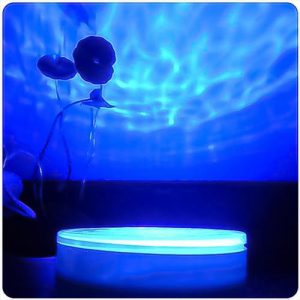 All imported high-power LEDs are used as light sources, which have the advantages of long life, low power consumption, pure colors and no pollution. Cooperate. DMX512 control system can achieve a variety of color change effects. It can work under the water for a long time, with a protection level of 1P68. It is powered by a low-voltage DC power supply, which is safe and reliable. The high-quality stainless copper shell is beautiful, generous, safe and reliable, and has strong ornamental features. The material is generally stainless steel outer panel and aluminum lamp body, which has the advantages of strong anti-corrosion and strong impact resistance. And has a very good waterproof design, simple maintenance and easy installation. The specifications are generally between 80-160mm and the height is 90-190mm.
All imported high-power LEDs are used as light sources, which have the advantages of long life, low power consumption, pure colors and no pollution. Cooperate. DMX512 control system can achieve a variety of color change effects. It can work under the water for a long time, with a protection level of 1P68. It is powered by a low-voltage DC power supply, which is safe and reliable. The high-quality stainless copper shell is beautiful, generous, safe and reliable, and has strong ornamental features. The material is generally stainless steel outer panel and aluminum lamp body, which has the advantages of strong anti-corrosion and strong impact resistance. And has a very good waterproof design, simple maintenance and easy installation. The specifications are generally between 80-160mm and the height is 90-190mm.
Power amplifier circuit
Ocean water has the lowest absorption of blue light, while sea water near the coast has the highest transmittance of green light. According to the monitored environmental light source, a high-brightness green LED area array light source is used. The area array has a rated power of 192W and a rated voltage of 24V. The light source is dark and light controlled by flow control. The power amplifier device of the power amplifier circuit selects the amplified current type power amplifier device PA12A. The power supply voltage of PA12A is between + 10-50V and the maximum output current can reach + 15A. It is important that the chip uses beryllium oxide (BeO) in its design to minimize the temperature coefficient of its impedance, which greatly improves its thermal The stability improves the stability of the system light source.
Marine Flood Light Application Analysis
Marine floodlight lighting technology
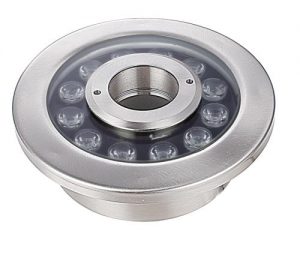 1.Angle of incidence
1.Angle of incidence
It is the shadow that brings out the undulations of the facade, so the lighting should always provide surface imaging, and the light directed at the facade at an opposite angle will not form a shadow and make the surface appear flat. The size of the shadow depends on the surface relief and the angle of incidence of the light. The average illumination direction angle should be 45 * (see Figure 1A). If the fluctuation is extremely small, this angle should be greater than 45 °.
2.Lighting direction
In order for the surface lighting to look balanced, all shadows should be cast in the same direction, and all luminaires that illuminate the surface in a projection area should have the same projection direction. For example, if two lamps are symmetrically aimed at the vertical direction of a surface, shadows will be reduced and chaos may occur. Therefore, it may not be possible to see the surface undulations clearly. However, large protrusions can produce large dense shadows. To avoid damaging the integrity of the facade, it is recommended to provide weaker illumination at an angle of 90 ° to the main light to weaken the shadows.
3.Viewing angle and lighting direction
In order to see the shadows and surface fluctuations, the lighting direction should be different from the viewing direction, and the angle between these two directions should be at least 45 °. However, for monuments that can be seen from several places, it is impossible to strictly adhere to this rule. The main observation point should be selected, and this observation direction is given priority in lighting design. Ocean flood light placement
A.determine the location
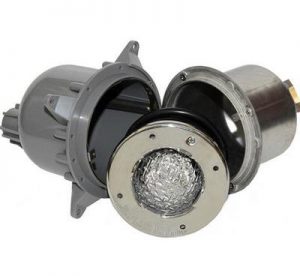 In a seawater background, it is often impossible to install floodlights in the ideal location.Step-by-step studies make adjustments to take into account the physical constraints of the location and reach the most satisfactory solution.
In a seawater background, it is often impossible to install floodlights in the ideal location.Step-by-step studies make adjustments to take into account the physical constraints of the location and reach the most satisfactory solution.
B.Appearance in daylight
Once the location of the luminaires required for nighttime lighting has been determined, ensure that the lighting fixtures are
Will damage the visual effect during the day.
C. Glare
In most floodlighting schemes, the photometric characteristics of the luminaire can cause an unsustainable risk of glare. Therefore, it is necessary to check the possibility of glare, whether directly or caused by reflection, will affect the overall lighting effect. It is necessary to adjust the lighting equipment to eliminate this risk.
Marine Flood Light Features
1.Beam range
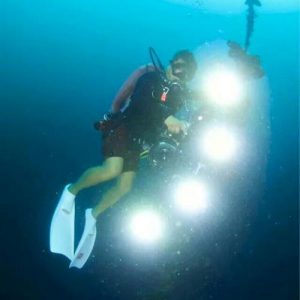 The width of the beam produced by a floodlight may be larger or smaller, depending on the adjustment of the position of the optical system and the light source in the luminaire. Conventionally, the beam range of a floodlight is determined by a direction of the luminous intensity equal to 50% of the peak luminous intensity in the axial direction of the beam. The beam range of circular symmetrical floodlights remains unchanged on all sides. The beam range of rectangular floodlights is usually oval, which is determined by two values corresponding to two symmetrical planes. In some applications, the luminaire beam used is asymmetric at peak intensity. In this case, the beam range is equal to the two half angles determined by the light intensity of 50%. Light intensity distribution curves Two floodlights with the same intensity peak and the same beam range may have different light intensity distribution curves: these curves will provide useful information when selecting the luminaire that is best suited to solve the flood lighting problem. Due to the narrow beam range of many floodlights, the curves in polar coordinates above are usually impossible to read or inaccurate. In most floodlights, the light source that transfers the optical system will change the shape of the distribution curve (beam range, light intensity, and symmetry).
The width of the beam produced by a floodlight may be larger or smaller, depending on the adjustment of the position of the optical system and the light source in the luminaire. Conventionally, the beam range of a floodlight is determined by a direction of the luminous intensity equal to 50% of the peak luminous intensity in the axial direction of the beam. The beam range of circular symmetrical floodlights remains unchanged on all sides. The beam range of rectangular floodlights is usually oval, which is determined by two values corresponding to two symmetrical planes. In some applications, the luminaire beam used is asymmetric at peak intensity. In this case, the beam range is equal to the two half angles determined by the light intensity of 50%. Light intensity distribution curves Two floodlights with the same intensity peak and the same beam range may have different light intensity distribution curves: these curves will provide useful information when selecting the luminaire that is best suited to solve the flood lighting problem. Due to the narrow beam range of many floodlights, the curves in polar coordinates above are usually impossible to read or inaccurate. In most floodlights, the light source that transfers the optical system will change the shape of the distribution curve (beam range, light intensity, and symmetry).
2.Light output of flood light
Some flood lighting can be equipped with lamps with different luminous flux outputs. Therefore, the intensity of flood lighting is usually obtained when the luminous flux of the lamp reaches 1000 lm, and the actual intensity can be calculated according to the light output of the lamp used.
3.Light output ratio
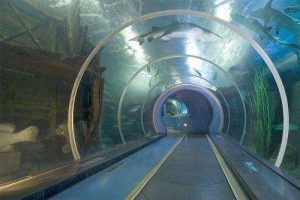 The light output ratio is the ratio of the total luminous flux emitted by a flood light to a bare light: it is a general indicator of the efficiency of a flood light. Another practical number is the beam coefficient, which represents the ratio of the luminous flux emitted in the beam range to the luminous flux emitted by a naked lamp. Recommended brightness of objects for lamp power In order to correctly display the appearance of an object, the average brightness of the illuminated facade should be determined according to the ambient illuminance, the size and position of the object. The higher the average brightness of the environment (especially the background), the higher the brightness of the illuminated object. Objects with low illumination will not be displayed against a bright background. On the other hand, bright objects may be too noticeable in low light environments. In order to create a sufficient visual effect, a small piece of surface should achieve high brightness. In similar environments, large areas require weaker brightness. For the same area and size, objects seen from a distance require more brightness than objects seen from a near distance.
The light output ratio is the ratio of the total luminous flux emitted by a flood light to a bare light: it is a general indicator of the efficiency of a flood light. Another practical number is the beam coefficient, which represents the ratio of the luminous flux emitted in the beam range to the luminous flux emitted by a naked lamp. Recommended brightness of objects for lamp power In order to correctly display the appearance of an object, the average brightness of the illuminated facade should be determined according to the ambient illuminance, the size and position of the object. The higher the average brightness of the environment (especially the background), the higher the brightness of the illuminated object. Objects with low illumination will not be displayed against a bright background. On the other hand, bright objects may be too noticeable in low light environments. In order to create a sufficient visual effect, a small piece of surface should achieve high brightness. In similar environments, large areas require weaker brightness. For the same area and size, objects seen from a distance require more brightness than objects seen from a near distance.
Advantages of floodlights VS other lamps in marine lighting
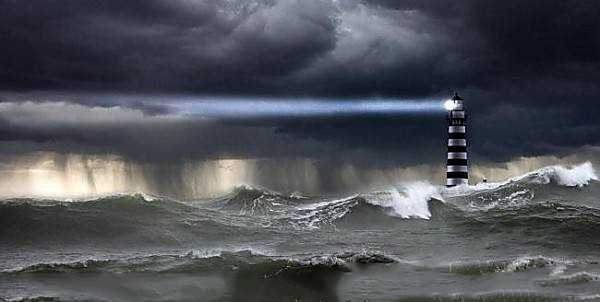 At present, marine lighting equipment is mainly high-pressure sodium lamps and fluorescent lamps. With the advent of high-power white LED floodlights, LED floodlights have the characteristics of high efficiency, energy saving, environmental protection, and long life, making them a new light source. It is possible for the marine lighting system. At present, the marine lighting system is compared with the LED lighting equipment. We are a professional lighting marine floodlight designed for underwater lighting, with 1000 lumens output. With IPX8 waterproof rating (1000 meters underwater), it is fully waterproof and safer to use. The metal reflector cup system combined with PDOT digital precision technology has a maximum light intensity of 80,400cd, a range of 300 meters, and a maximum battery life of 72 hours. It helps fill light in underwater photography, makes the light softer and restores true colors. In terms of volume, it still adheres to lightweight and compact design. The lamp body uses too-grade aluminum alloy material and military-grade three-level hard oxidation treatment technology, which effectively prevents seawater corrosion and protects the core components of the lamp department. The built-in advanced temperature control module can automatically adjust the brightness output according to the working state of the flashlight and the external temperature to ensure stable work for a long time. The economics and feasibility of white light LEDs for marine lighting sources in the future are analyzed, and their application prospects as a new generation of green environmental protection light sources in offshore platform lighting are analyzed.
At present, marine lighting equipment is mainly high-pressure sodium lamps and fluorescent lamps. With the advent of high-power white LED floodlights, LED floodlights have the characteristics of high efficiency, energy saving, environmental protection, and long life, making them a new light source. It is possible for the marine lighting system. At present, the marine lighting system is compared with the LED lighting equipment. We are a professional lighting marine floodlight designed for underwater lighting, with 1000 lumens output. With IPX8 waterproof rating (1000 meters underwater), it is fully waterproof and safer to use. The metal reflector cup system combined with PDOT digital precision technology has a maximum light intensity of 80,400cd, a range of 300 meters, and a maximum battery life of 72 hours. It helps fill light in underwater photography, makes the light softer and restores true colors. In terms of volume, it still adheres to lightweight and compact design. The lamp body uses too-grade aluminum alloy material and military-grade three-level hard oxidation treatment technology, which effectively prevents seawater corrosion and protects the core components of the lamp department. The built-in advanced temperature control module can automatically adjust the brightness output according to the working state of the flashlight and the external temperature to ensure stable work for a long time. The economics and feasibility of white light LEDs for marine lighting sources in the future are analyzed, and their application prospects as a new generation of green environmental protection light sources in offshore platform lighting are analyzed.

